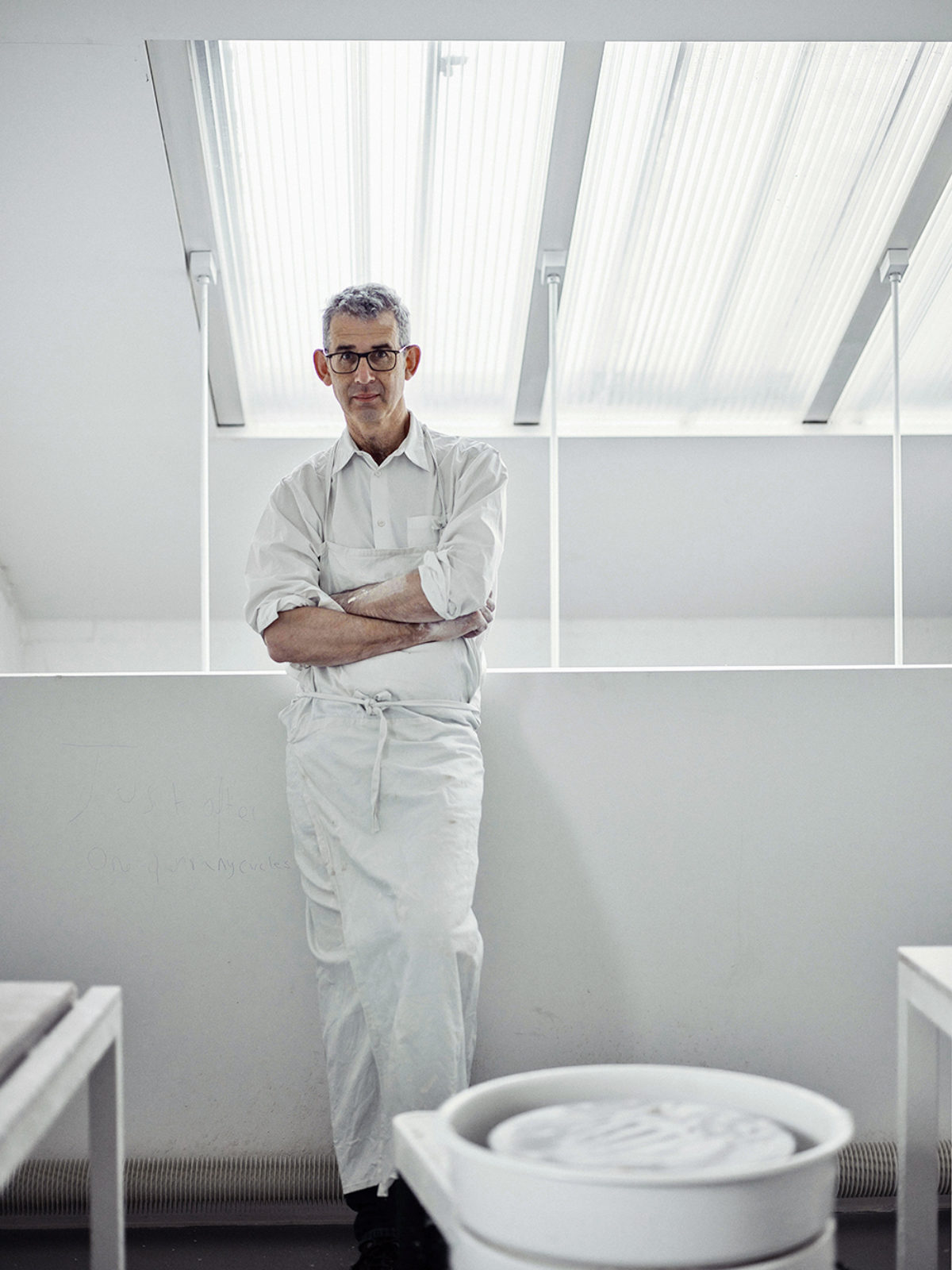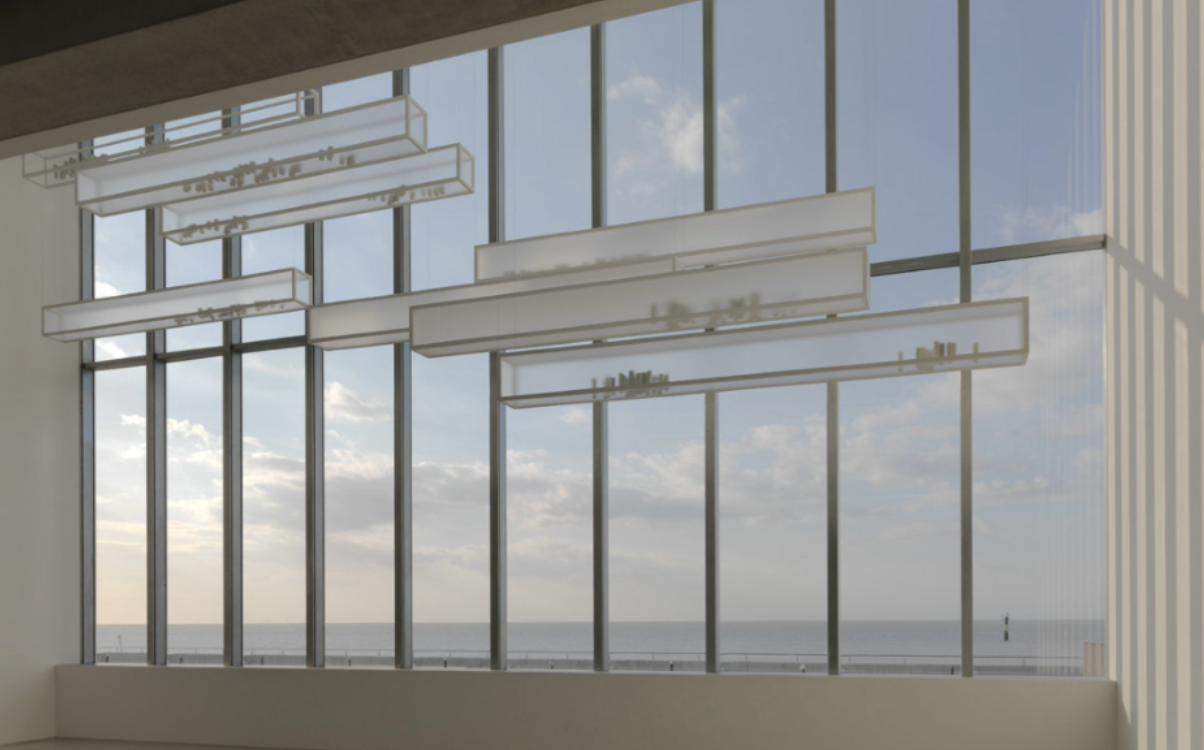Edmund de Waal
Born in 1964 in Nottingham, UK, , Edmund de Waal is renowned for weaving narratives and history through his visual art and literary works. Apprenticing with potter Geoffrey Whiting in the early ’80s, he developed a fascination for merging Chinese and Japanese ceramic traditions with occidental techniques. After obtaining a BA in English Literature, he pursued a Daiwa Anglo-Japanese Foundation scholarship, delving into Japanese language and ceramics in Tokyo. Shifting focus to porcelain upon his return to London in 1993, de Waal’s art evolved into meticulously arranged installations exploring themes of diaspora, memory, and materiality.
His architectural interventions, such as The Porcelain Room at the Geffrye Museum, marked milestones in transforming spaces with porcelain vessels. De Waal’s artistic practice extends beyond ceramics. His acclaimed memoir, The Hare with Amber Eyes, earned prestigious awards, while subsequent works like The White Road and Letters to Camondo further showcase his literary prowess.
De Waal’s multidisciplinary approach, deeply intertwined with research and collaborations, extends to creating a pavilion, the library of exile, which traveled globally, and a profound contribution to the rebuilding of the University of Mosul library in Iraq. Recognized for leaving an indelible mark on the intersections of art, literature, and humanity, he has been the subject of important exhibitions worldwide, including « Thinking of You. I Mean Me. I Mean You. » at the Jewish Museum, New York, and « elective affinities » at the Frick Collection, New York. Edmund de Waal emerges not just as an artist but as a storyteller, historian, and connector, reshaping the landscape where art, literature, and humanity converge.

